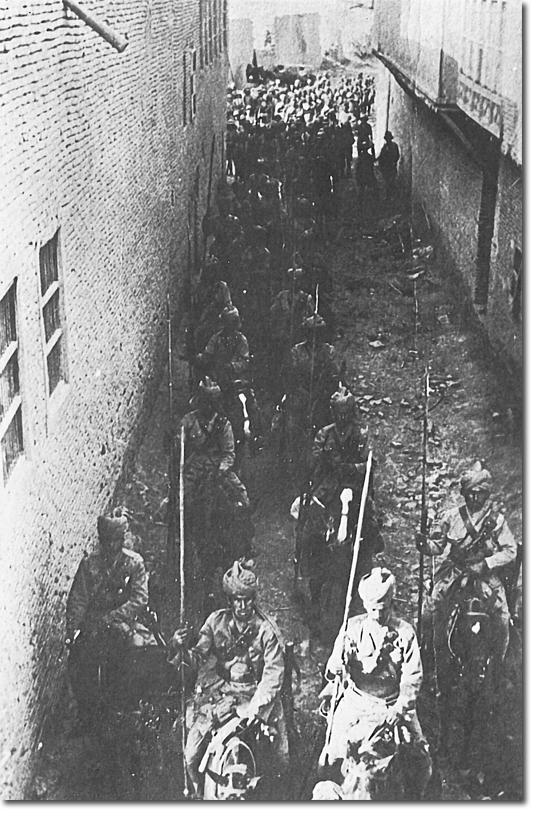|
|


|
|
British imperial annals are dotted with
disasters - Yorktown, Isandlwana,
Kabul, Khartoum - and the one which
occurred in April, 1916, at Kut-al-Amara,
a small town on the Tigris river, 100 miles
south of Baghdad, deserves to rank with
them. Here 8,000 British and Indian
soldiers, unable to reach their objective,
Baghdad, were besieged and starved into
surrender by the Turkish army.
There was no immediate need to capture Baghdad. Britain already held the key towns controlling the Persian Gulf, thus protecting her Middle Eastern oil fields. But there were long-term considerations which seemed to justify the otherwise unnecessary assault: the need to prevent possible Turkish attacks on Allied ships bound for India and to extend British control in the Middle East. For such an operation, large resources of men and munitions were necessary. But only one depleted division of 12,000 men, under Major-General Charles Townshend, set out in November, 1915. On the 26th a defeat with severe losses, at Ctesiphon, 18 miles south of Baghdad, forced them back on Kut. There the troops, now 8,000 strong, entrenched themselves to await rescue by a relief expedition. But the bulk of the Turkish army, deployed in rough country south of Kut, was ideally placed to hold off the relief force. Additionally hampered by floods, the relievers failed in three attempts to break through to Kut. An effort by Lawrence to buy off the besiegers with £1 million was contemptuously rejected by the Turkish commander Khahil Pasha. Horsemeat was plentiful at first - for those who wanted it: vegetarian members of some Hindu sects refused it, despite dispensation from their religious leaders - but by April the garrison was slowly starving to death at the rate of 30 a day. On April 29, 1916, came the surrender. The weakened survivors were force marched across the desert to imprisonment at Aleppo, a sad and cruel end to a venture which ought never to have been started. This picture shows Indian Lancers marching through the streets of Kut during its recapture ten months after the humiliating and costly surrender to the Turkish army in April, 1916. |
Armed Forces | Art and Culture | Articles | Biographies | Colonies | Discussion | Glossary | Home | Library | Links | Map Room | Sources and Media | Science and Technology | Search | Student Zone | Timelines | TV & Film | Wargames